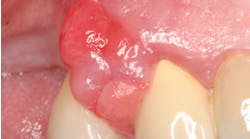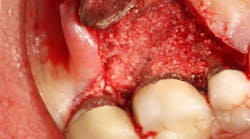Scientists identify oral bacterium linked to heart disease and meningitis
A novel bacterium, thought to be a common inhabitant of the oral cavity, has the potential to cause serious disease if it enters the bloodstream, according to a study in the International Journal of Systematic and Evolutionary Microbiology. Its identification will allow scientists to work out how it causes disease and evaluate the risk that it poses.
The bacterium was identified by researchers at the Institute of Medical Microbiology of the University of Zurich and has been named Streptococcus tigurinus after the region of Zurich where it was first recognized. S. tigurinus was isolated from the blood of patients suffering from endocarditis, meningitis, and spondylodiscitis (inflammation of the spine). It bears a close resemblance to other Streptococcus strains that colonize the mouth. Bleeding gums represent a possible route of entry for oral bacteria into the bloodstream.
Click here to read the entire article from ScienceDaily®.
Additional articles related to heart disease and oral-systemic connections ...
Applying research findings to patient care
Current research on oral-systemic connections
Dentistry and the oral-systemic connection






